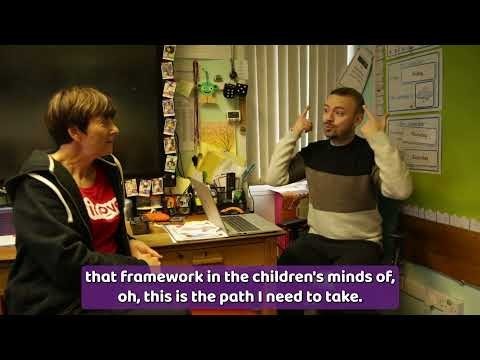Transcript from the video...
How can I make sure the kids behave when we’re being active in the classroom?
One of the questions that I often get asked by primary school teachers when they want their classroom to be more active is, “I've never done anything active in the classroom, but I know that my kids will just go crazy and it'll cause chaos. So, I'm kind of not really happy about doing it”.
But there are steps that you can take to get over that bad behaviour, and so Ryan here is going to explain what he did in his classroom to get over the bad behaviour hump.
It does happen and whenever anything new is introduced, if it's not managed properly, then it can take over. So, it's about you being aware that it can happen and you retaking control of that situation.
So, if you know that you're going to introduce something new to your class, the best thing to do before you even go ahead and do it, is explain to the children that we're going to try something new today.
We're actually going to have a go at doing something active, explain what it is and what the children will learn from it. You need to explain everything that's going to happen, and lay the ‘law down’ because you, as the teacher, are the one that's in charge of managing that situation.
Firstly, I introduce the fact we’re going to do something active. We're going to have a real good time, but this is what's going to happen whilst we're being active, and then this is what's going to happen when we stop being active.
I like to make sure my pupils know what is expected before hand, how we transition from being stale and inactive to being active to then going back to our normal routine. That means you are starting to build that framework in the children's minds of, “Oh, this is the path I need to take”.
All of your expectations are passed on to the child and there's no excuse for them to go, “well, I didn't know, I'm just going to be crazy for another 10-15 minutes after the activity and disrupt everybody else”. We make sure the expectations have been set and they know that's not acceptable.
You build in that pocket of information. And you say, “right, we're going to start doing passive active learning now. I'm going to ask everyone in just a few minutes time to stand up out of their chairs, when I ask you to do that I only want you to stand up. I want you to have your mouths closed and to be looking at me for the next instruction”. This shows you are guiding them through every single step and they are aware that, “OK, we're going to do something active”.
In this way we get your class thinking, “I'm going to stand up, but I'm not going to mess around because I need to be listening to know what the next activity is, what the next step is”. Doing this will allow you to guide them through and focus on the most important elements of the activity.
Then you're going to put it into practice, reminding the class to go through every step that they need to remember what they were told at the beginning; this is what we're doing now; and finally, that they’ll be going onto the next step and then bring it back down to a nice calm finish.
They've got no excuse. If you talk in straight prep, teach it, and then talk them through every step. It works a treat, you may get a little bit of pushback for the first few times, but then it becomes the norm, not the exception.
Set your expectations and then just power through that little bit of uncomfortableness. If you like in the first couple of times, you do it and then it will just be become the routine plain sailing.
Remember, once you’ve set your expectations and made this a routine, you will actually see a marked improvement in behaviour throughout the rest of the lesson, the children will be more focused on what you’re teaching them and more ready to spend more time on any task you may set for them outside of the active portion of the lesson.
